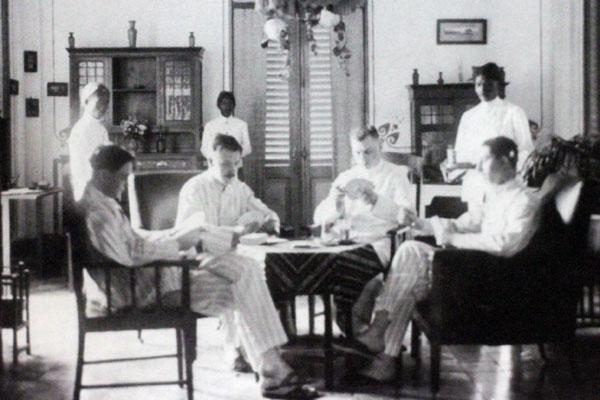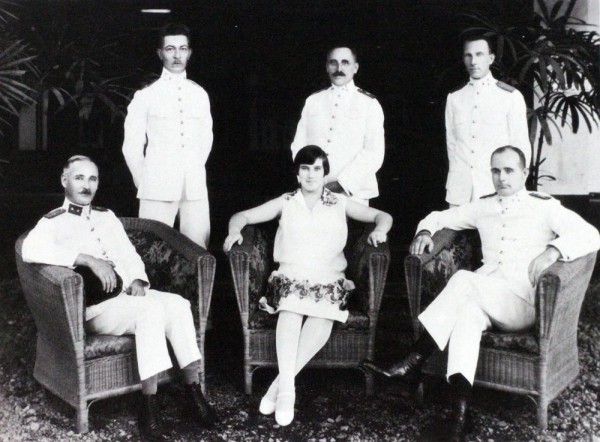
style
13 May 2011
Men's Fashion Tempo Doeloe
Learning about “Fashion tempo doeloe” (or fashion during Dutch colonialism in Indonesia) is interesting and I was still surprised to read people’s comments on the previous article requesting more similar one 😀 Now here it is, the men’s wear version, since it wouldn’t be fair if I report on the women’s clothes only. This article was made according to my observation on a book titled Tropenecht: Indische en Europese kleding in Nederlands-Indie by Dorine Bronkhorst D and Esther Wils.
We begin our journey through the fashion of fashion tempo doeloe to where it all started, in the Netherlands. Since more and more Dutch people went to Indonesia, those who had been to our country shared their experience and tips about the attires. The clothing company specifically dedicated for “Indie-goers” also existed in the Netherlands. Books consisting manuals about the household needs, practical items and also clothing purchased before they went to Indonesia were also published. Also the typical Indonesian clothing like sarung and kebaya were recommended to be bought before heading to Indonesia.
Some brands were famous for producing clothes to be worn in Indonesia such as Gerzon, Au Bon Marche, Polak of Deventer and the Beehive. Shops that offered Indonesian outfits were available on Stationsweg in The Hague. But still, the best clothing of such items was stated to be made in Indonesia. Officials and employees of Dutch private companies were advised to separate the budget for Indonesian pieces. Here are the essential clothing for men in Indonesia during the era:
1. Sleep Pants and “jacket”
Wearing sleep pants and jacket could be considered as wearing the male version of sarung and kebaya, the traditional wear for men that lasted from the middle of 18th century until about 1915. Initially, the sleep pants or the pajama pants were worn to avoid mosquito bites in Indonesia. It’s a wide trousers that originally made of cotton batik. Sleep pants were mentioned to be the most comfortable bottom at home or during family trips.
While the jacket or “male kebaya” is a loose, high-necked, white collarless jacket of soft cotton with buttons at the front. There was also a variant of the Chinese high-necked jacket and therefore called “badjoe Tjina”. The male kebaya came in various models including ones with a flap in front that resemble Japanese kimono. Those gentlemen had decided the appropriate clothes, through years of experience, and proved the best and easiest clothing in home at this warm-weather country. They are the sleep trousers and male kebaya.
2. Djas Toetoep (literally translated as “closed suit”)
According to the photo credit on the book, djas toetoep was popular around 1900 to 1930s. It a high-necked jacket with standing collar that mostly made of Russian linen, and closed with plug buttons. The jackets were nearly identical: by having a single row of buttons and two flap pockets. The men wore them with white long pants for everyday wear. From planters to private miners, soldiers to middle school students (with a slightly modified version) were wearing djas toetoep. A good djas toetoep was said to be the ones that were so stiff, especially those that became stiffer after washing. Many gentlemen had their djas toetoep from the tailor by custom made order to get the perfect fit.
3. Hat
Hat seemed to be men’s best friend to complete their looks. Helmet hat or topee in Dutch was how Indonesians called this head cover item “topi”. My guess is, hats might have been the most practical accessories to cover the head from the sun in our tropical country. That’s why hats came in various styles to suit every occasions and to match each style of clothing.
As examples, pith helmet or helmet often paired with djas toetoep, tropical helmet or straw hat (or panama hoedoen) was much worn by the planters and some men in the cities, and BB cap (a cap with a white linen cover and a white silk stripe and a badge) was often worn by Dutch officials or the domestic directors. The sugar caps worn by sugar planters, had the same shape as the BB cap, but the badge was missing. Male students at the high school also got their own hats, the HBS caps.
If you want to check out the perfect setting where you can imagine men and women walking around in their stylish tempoe doeloe outfits, do make time to visit Jakarta Kota Tua. Another great reason to come there is a special program held by British Council called Mystery of Batavia. This weekend is your last chance to see the cool interactive animated performance in Museum Fatahillah so you better not miss it! Visit their website for schedule and ticket information.
Once again, special thanks to British Council Indonesia for lending the books as the materials for this article.







